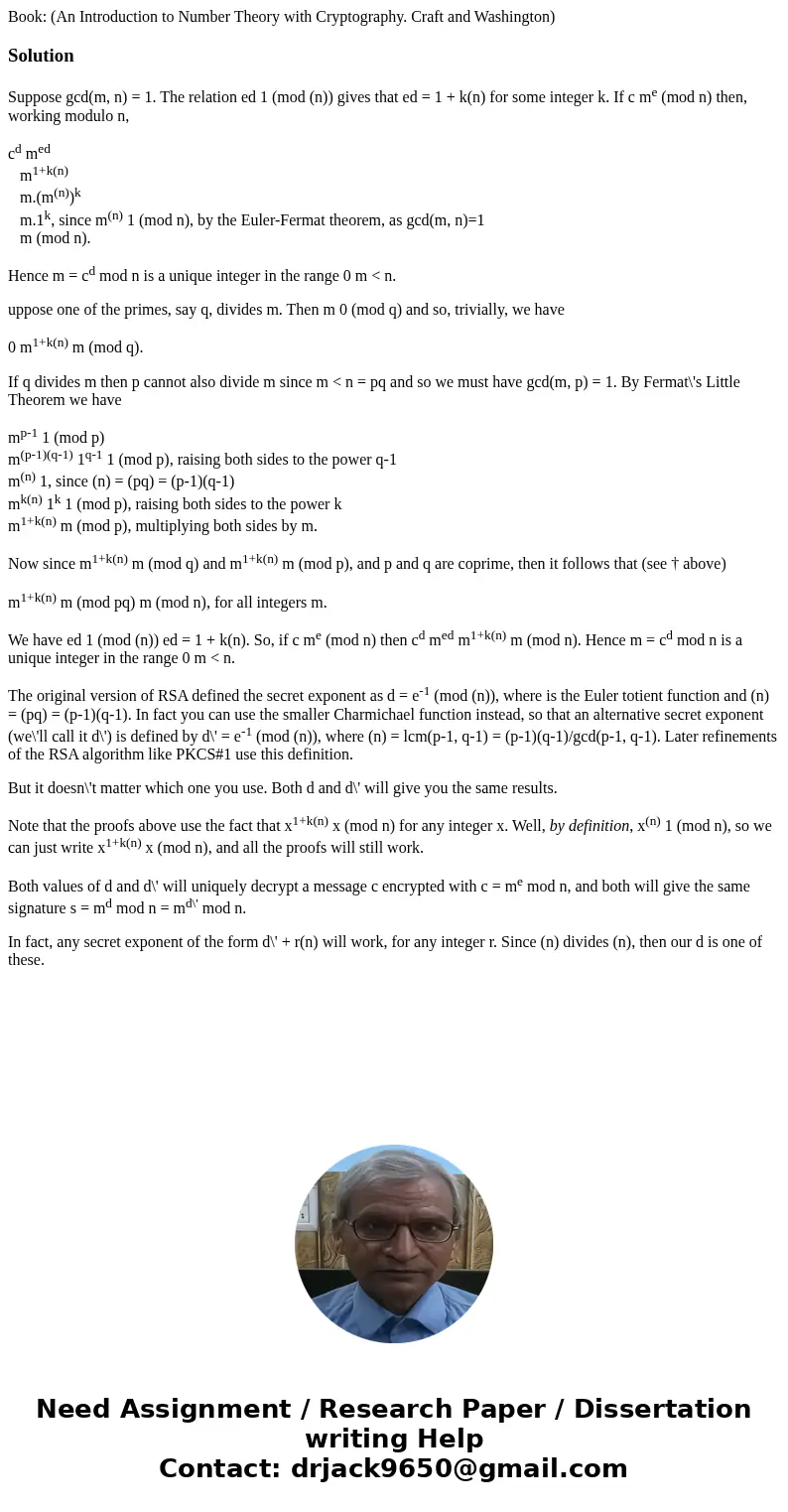Book An Introduction to Number Theory with Cryptography Craf
Book: (An Introduction to Number Theory with Cryptography. Craft and Washington)
Solution
Suppose gcd(m, n) = 1. The relation ed 1 (mod (n)) gives that ed = 1 + k(n) for some integer k. If c me (mod n) then, working modulo n,
cd med
m1+k(n)
m.(m(n))k
m.1k, since m(n) 1 (mod n), by the Euler-Fermat theorem, as gcd(m, n)=1
m (mod n).
Hence m = cd mod n is a unique integer in the range 0 m < n.
uppose one of the primes, say q, divides m. Then m 0 (mod q) and so, trivially, we have
0 m1+k(n) m (mod q).
If q divides m then p cannot also divide m since m < n = pq and so we must have gcd(m, p) = 1. By Fermat\'s Little Theorem we have
mp-1 1 (mod p)
m(p-1)(q-1) 1q-1 1 (mod p), raising both sides to the power q-1
m(n) 1, since (n) = (pq) = (p-1)(q-1)
mk(n) 1k 1 (mod p), raising both sides to the power k
m1+k(n) m (mod p), multiplying both sides by m.
Now since m1+k(n) m (mod q) and m1+k(n) m (mod p), and p and q are coprime, then it follows that (see † above)
m1+k(n) m (mod pq) m (mod n), for all integers m.
We have ed 1 (mod (n)) ed = 1 + k(n). So, if c me (mod n) then cd med m1+k(n) m (mod n). Hence m = cd mod n is a unique integer in the range 0 m < n.
The original version of RSA defined the secret exponent as d = e-1 (mod (n)), where is the Euler totient function and (n) = (pq) = (p-1)(q-1). In fact you can use the smaller Charmichael function instead, so that an alternative secret exponent (we\'ll call it d\') is defined by d\' = e-1 (mod (n)), where (n) = lcm(p-1, q-1) = (p-1)(q-1)/gcd(p-1, q-1). Later refinements of the RSA algorithm like PKCS#1 use this definition.
But it doesn\'t matter which one you use. Both d and d\' will give you the same results.
Note that the proofs above use the fact that x1+k(n) x (mod n) for any integer x. Well, by definition, x(n) 1 (mod n), so we can just write x1+k(n) x (mod n), and all the proofs will still work.
Both values of d and d\' will uniquely decrypt a message c encrypted with c = me mod n, and both will give the same signature s = md mod n = md\' mod n.
In fact, any secret exponent of the form d\' + r(n) will work, for any integer r. Since (n) divides (n), then our d is one of these.

 Homework Sourse
Homework Sourse